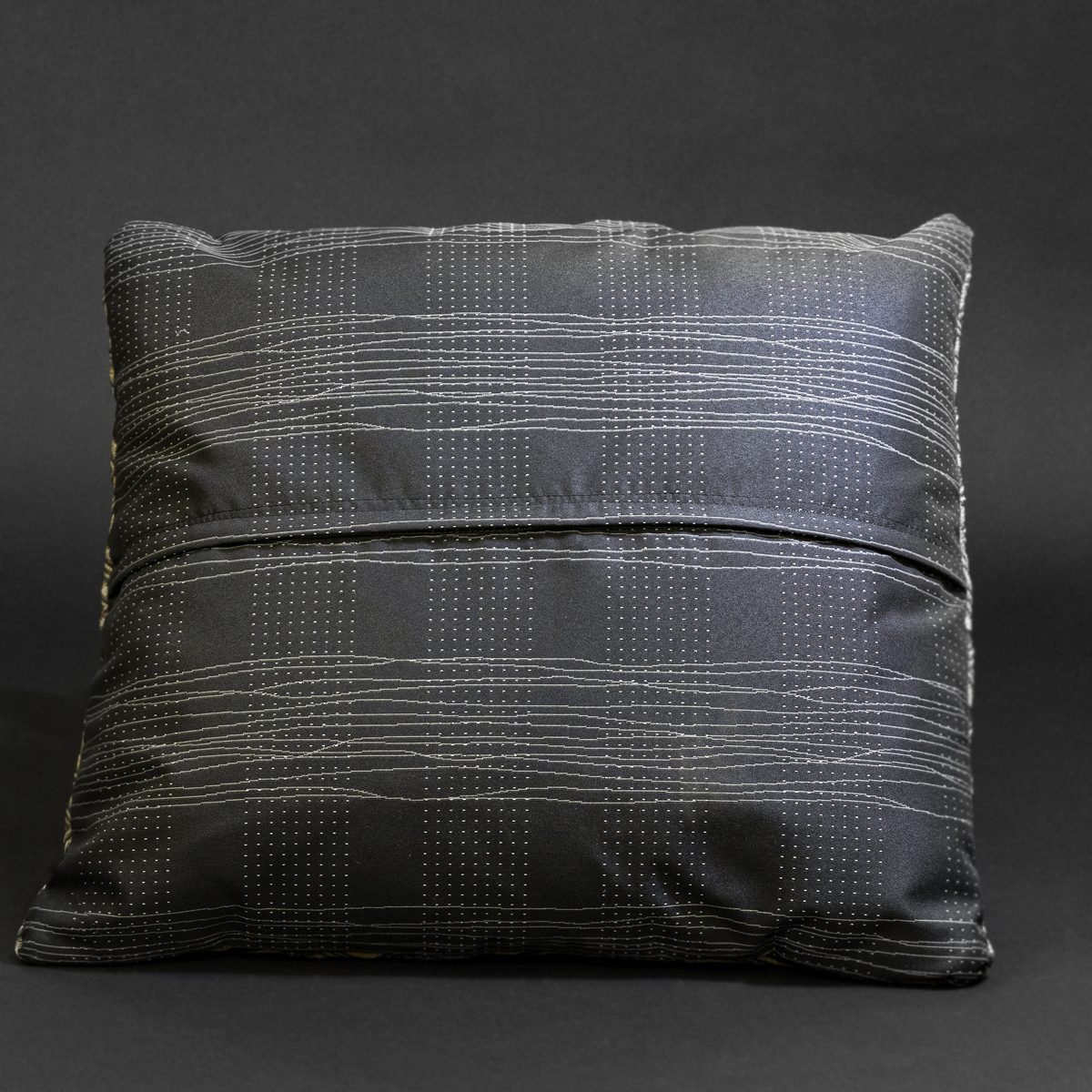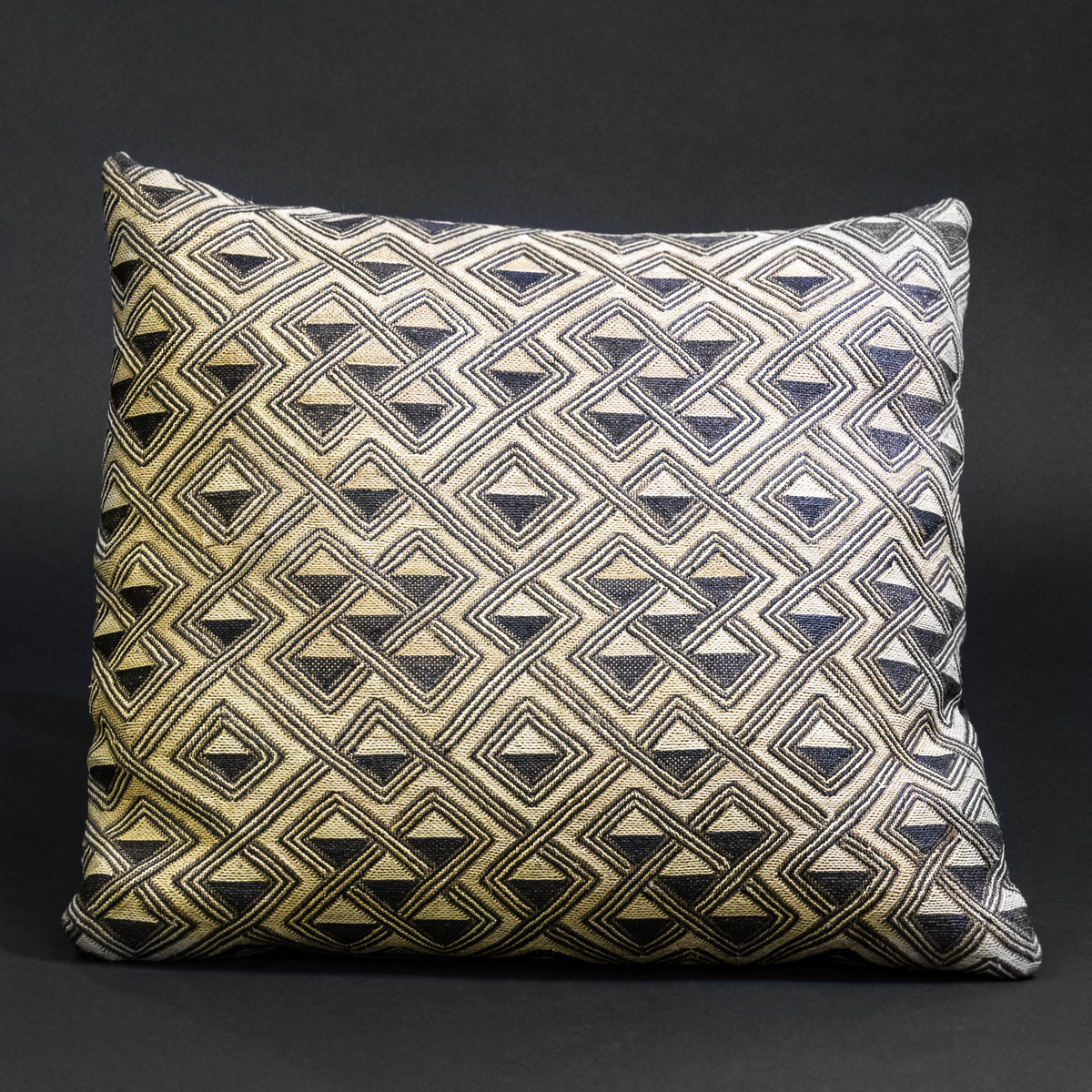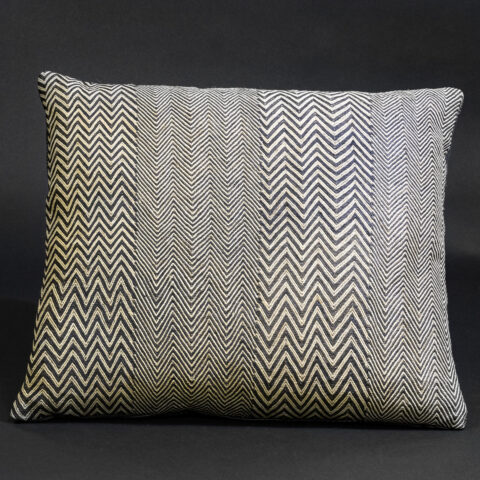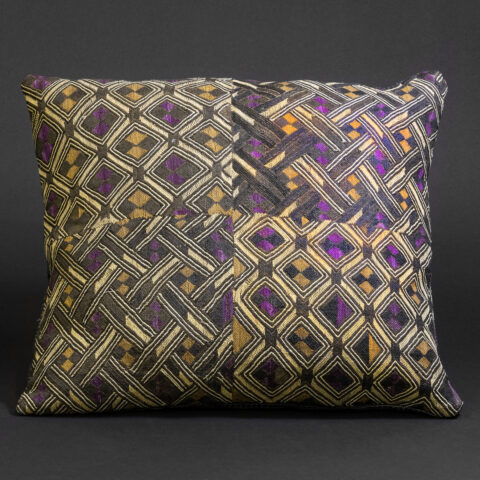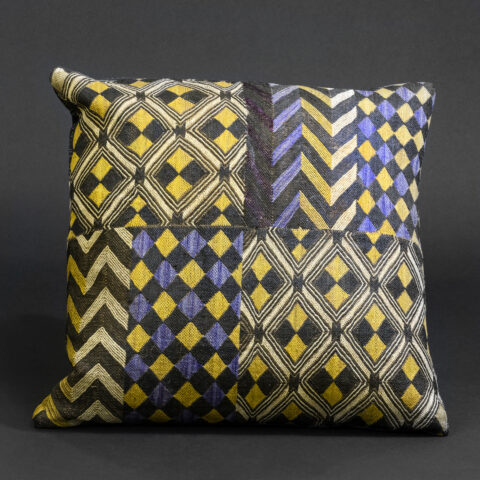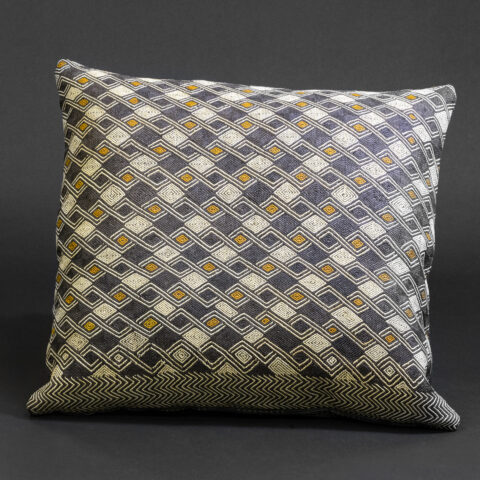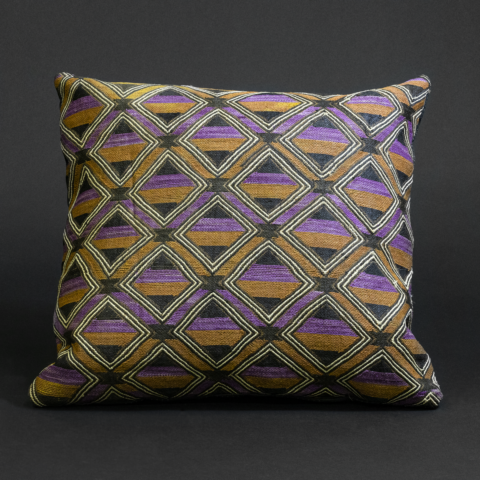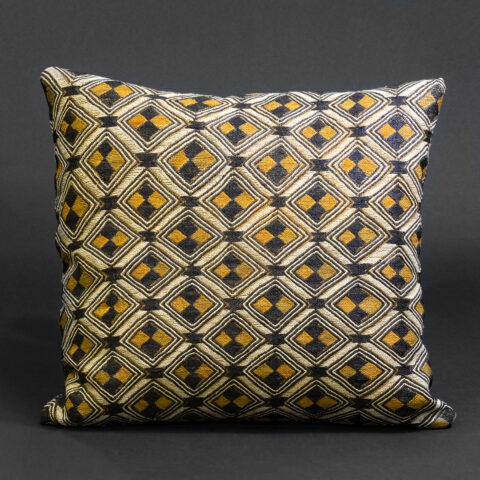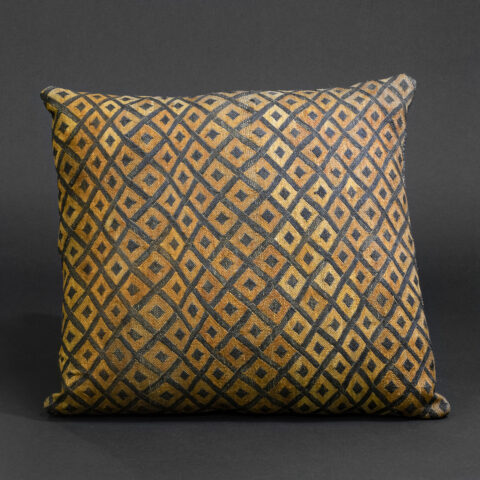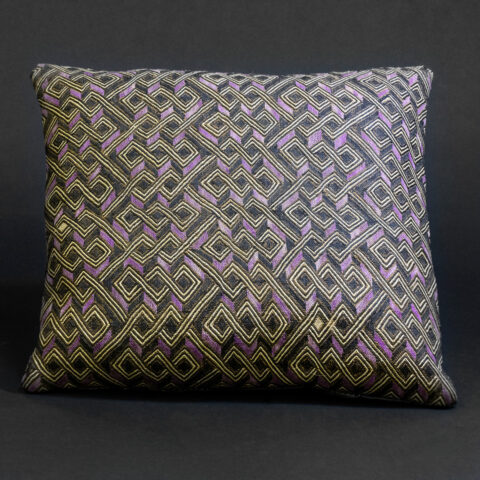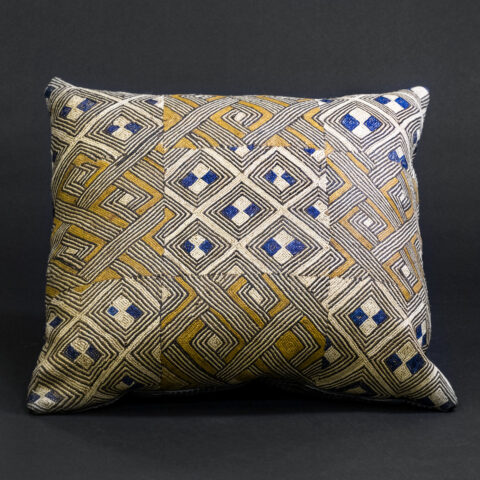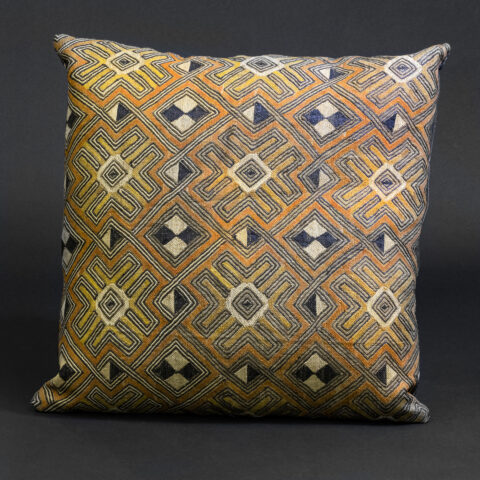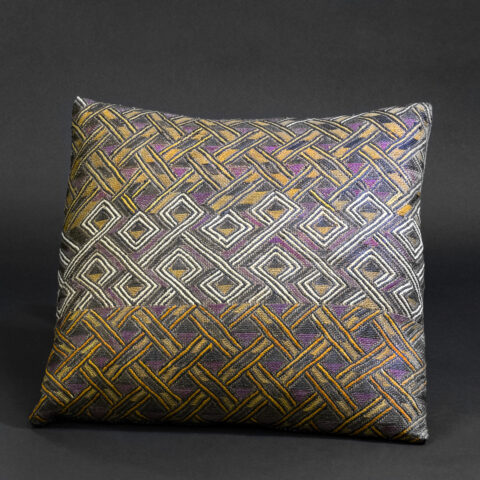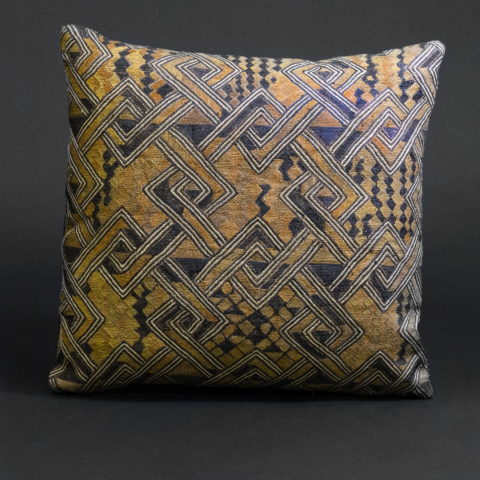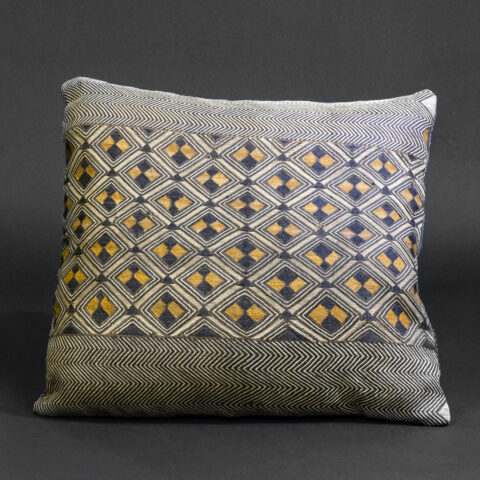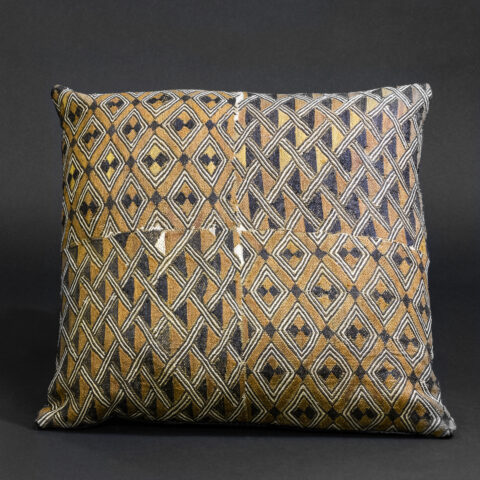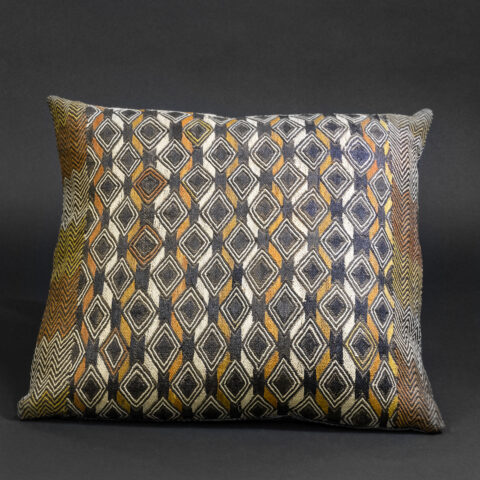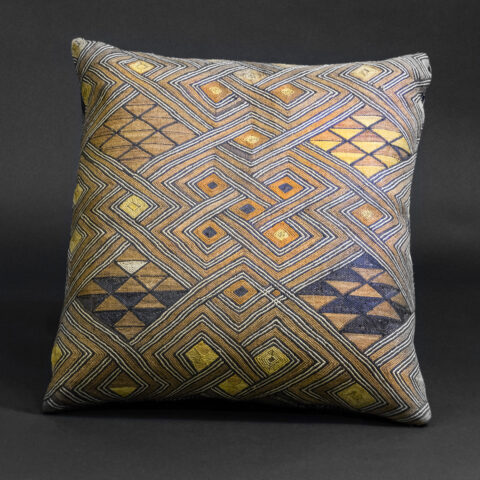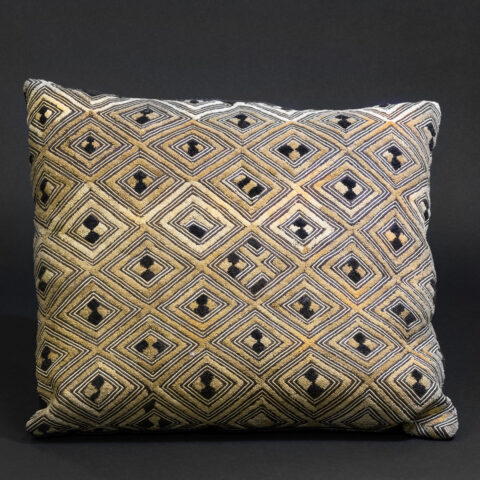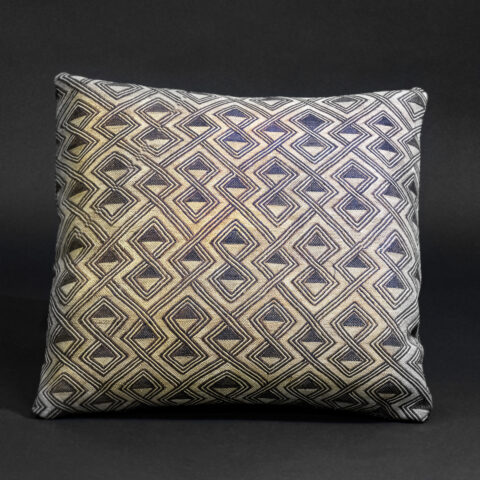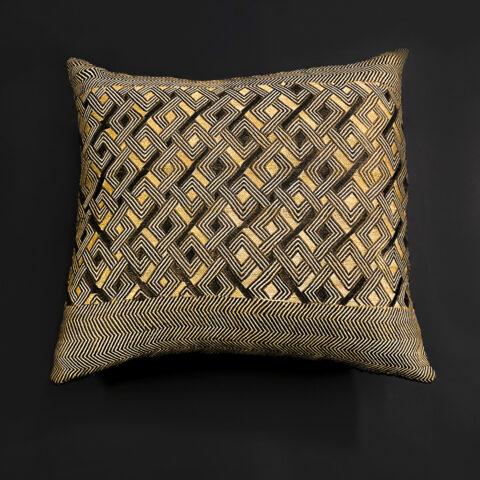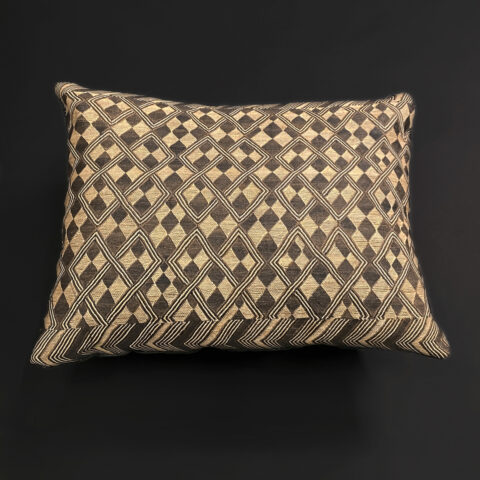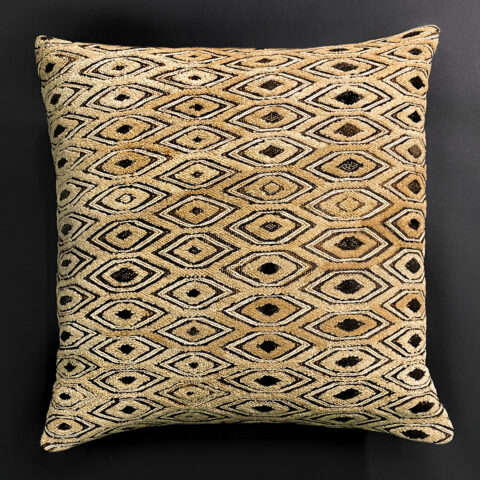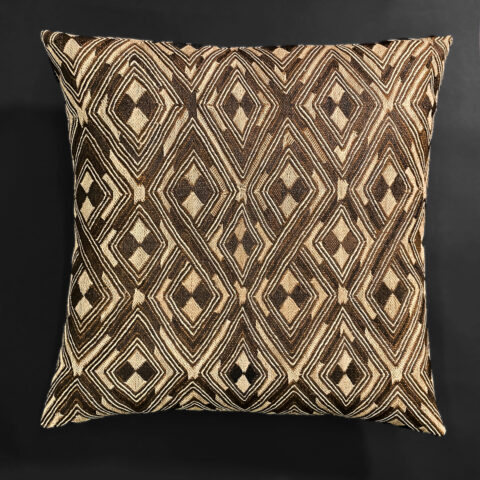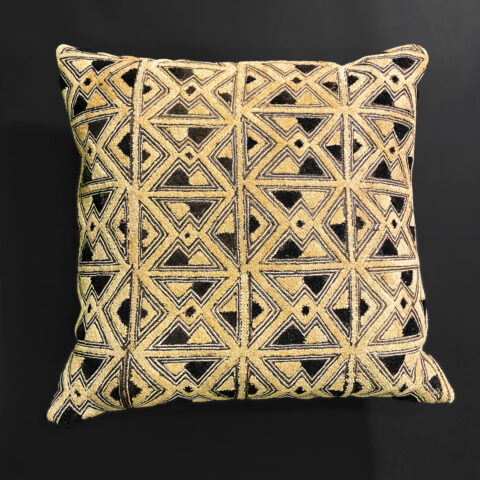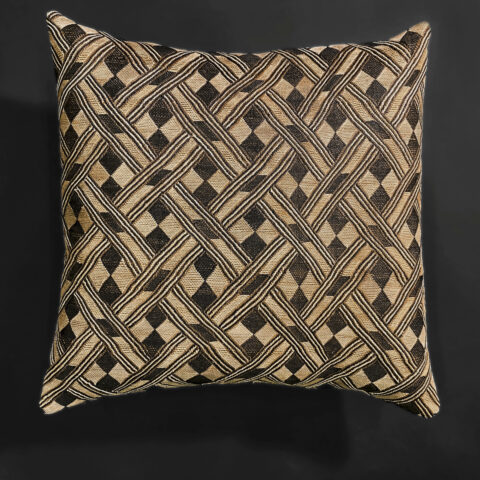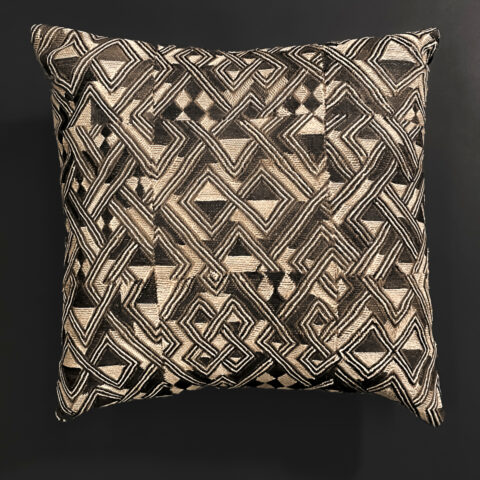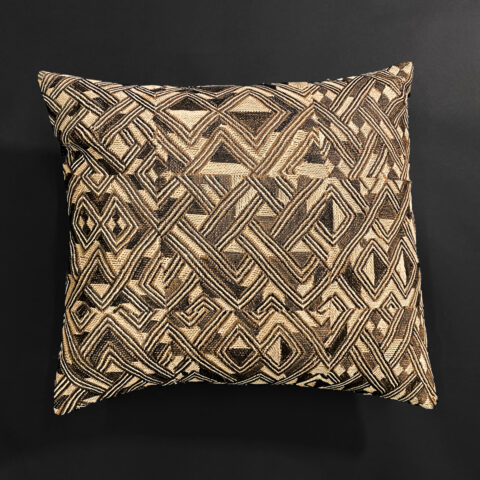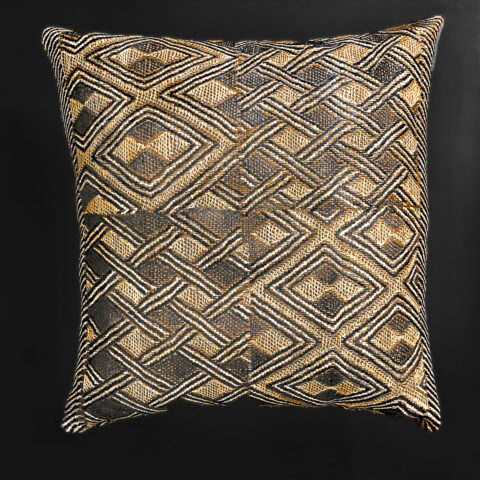Description
Exuding regal restraint and mathematical elegance, the “Geometries of Legacy” Raffia Pillow is a masterclass in Kuba textile artistry—where abstraction, symbolism, and ancestral continuity are rendered in striking black and ivory. Woven and embroidered entirely by hand in the Democratic Republic of Congo, this piece exemplifies the Kuba Kingdom’s renowned dedication to refined visual systems and spiritual design.
The design features interlocking ikula motifs—diamond and lozenge shapes meticulously layered in alternating sequences. These nested geometric forms, rooted in early 17th-century Kuba cosmology, express more than artistic ambition; they embody coded wisdom, communal memory, and cosmological balance. The monochrome palette highlights the motif’s structural depth, allowing the negative space to echo as strongly as the form itself—a design principle central to Kuba aesthetics.
Traditionally, raffia textiles were woven by Kuba men and embroidered by women, often within royal guilds or aristocratic lineages. The fibers, sourced from the raffia palm, are stripped, softened, and woven using a narrow single-heddle loom—one of Africa’s most ancient weaving tools. The embroidery process can take weeks, if not months, with each stitch representing both visual artistry and spiritual intent.
The repetition of motifs in this textile—purposefully disrupted by slight variation—reflects the Kuba worldview that true beauty lies not in perfect symmetry, but in rhythm, surprise, and intellectual complexity. Under the rule of King Shyaam a-Mbul a-Ngwo, these textiles became instruments of prestige, used in ritual exchanges, political negotiations, and as garments for high ceremony.
Reimagined by NOA Living into a statement pillow, this work of art brings timeless cultural depth to contemporary interiors. Its textural clarity and neutral tones allow it to layer seamlessly into minimalist, modernist, or richly textured global spaces—appealing to collectors, curators, and connoisseurs of heritage craft.


